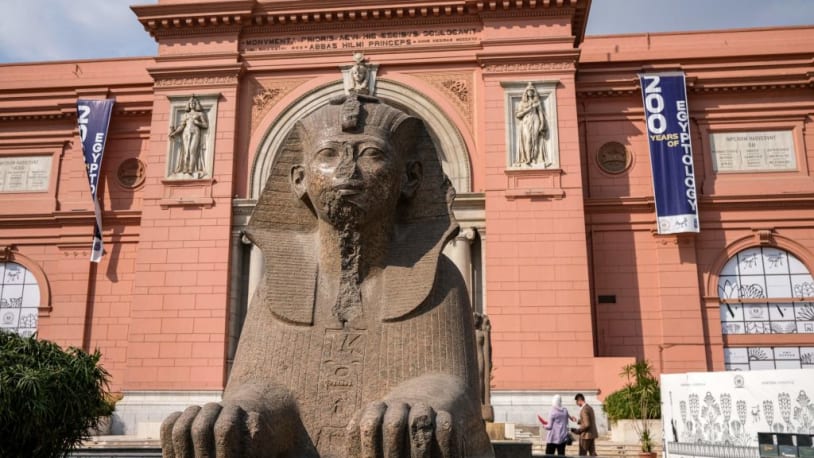
Egypt’s mummified ‘golden boy’ digitally unwrapped 2,300 years after burial
Egyptian researchers have “digitally unwrapped” the mummified remains of a teenager buried 2,300 years ago, known as Egypt’s “golden boy.” Radiologists at Cairo University used CT scans to examine the remains non-invasively, revealing that he was adorned in a gold mask and 49 protective amulets, NBC News reports.
The boy’s remains were first discovered in 1916 at a cemetery in southern Egypt called Nag el-Hassay, used between approximately 332 BC and 30 BC. He was sent to the Egyptian Museum in Cairo along with thousands of other preserved bodies excavated in Egypt in the 19th and 20th centuries, per CNN. Due to the destructive process of unwrapping preserved remains, the golden boy was moved into the museum’s basement and remained unexamined until recently.
When the study’s authors scanned the body, they identified 49 protective amulets with 21 distinct designs inside the body and between the wrappings, including a golden heart in his chest and a gold tongue in his mouth. The researchers say the amulets were placed by embalmers in an attempt to ease the boy’s transition to the afterlife. They were also able to 3D-print a copy of the heart scarab using data from the CT scans, CNN reports.
Saheer Saleem, a co-author of the study and professor of radiology at the Faculty of Medicine at Cairo University, told NBC News that the discoveries revealed evidence of the boy’s socioeconomic status while giving insight into the importance of amulets in the afterlife. Since the body went through a “very expensive and meticulous modification process,” Saleem surmised that “he came from some very rich family or maybe a noble family.”
The golden boy has been relocated to the main exhibition hall of the Egyptian Museum. He will be put on display with the CT images and the 3D-printed heart scarab to give visitors more insight into the traditions of ancient Egyptian death rites. “The display’s goal was to humanize this individual from the past to teach modern people about life in ancient times,” the researchers wrote in the study.
Egyptian researchers have “digitally unwrapped” the mummified remains of a teenager buried 2,300 years ago, known as Egypt’s “golden boy.” Radiologists at Cairo University used CT scans to examine the remains non-invasively, revealing that he was adorned in a gold mask and 49 protective amulets, NBC News reports. The boy’s remains were first discovered in…
Egyptian researchers have “digitally unwrapped” the mummified remains of a teenager buried 2,300 years ago, known as Egypt’s “golden boy.” Radiologists at Cairo University used CT scans to examine the remains non-invasively, revealing that he was adorned in a gold mask and 49 protective amulets, NBC News reports. The boy’s remains were first discovered in…